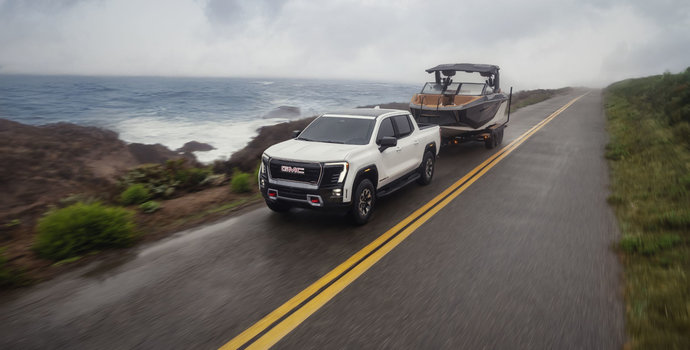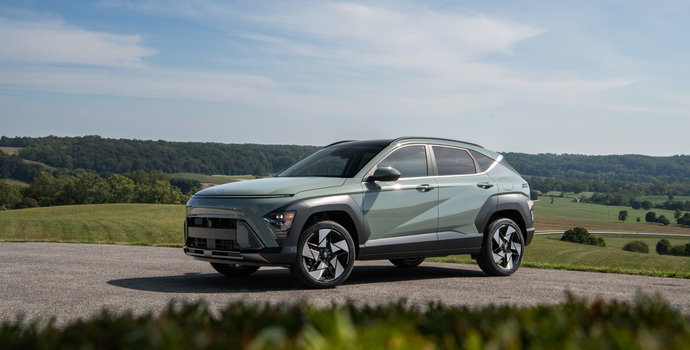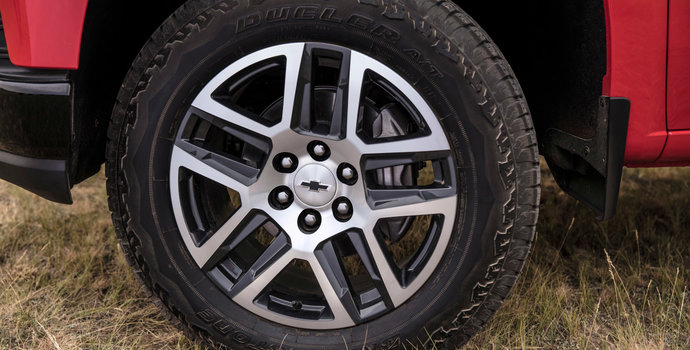Step 1: Preparation
Before you start looking for new vehicles that are for sale, there is some initial preparation you can do to make the rest of the process much easier.
The best way to avoid overspending is by figuring out what your ideal budget should be. Remember that the purchasing price of the vehicle is not the only way that a car can cost you money. There are also taxes, licensing fees, license plates, registration, and more:
- Depreciation — this affects for how much you can re-sell your car and new cars lose the most value in depreciation within the first few years of ownership
- Fuel Economy – even a slight difference can save or cost you thousands of dollars over time
- Insurance — models that are cheaper and have better safety ratings are cheaper to insure
- Reliability — more reliable cars will save you a lot in repairs and maintenance over time
If you wind up spending a lot more than you can afford, you can very quickly find yourself in financial trouble. So make sure you do your research and choose your car carefully.
Step 2: Research
If you know your budget and already know what models you want to look for then you can skip to Step 3 below. This is an optional step for people who want to know more about what vehicles are available in the market.
2.1 Pick Your Ideal Vehicle
In general, you should figure out what your needs are when shopping for a new car. When doing so you should consider where you live, if you have a job that requires a certain type of vehicle, or if you want to use it for personal things like hiking or family trips. In general, for example, if you’re shopping for a vehicle in Toronto then a small and fuel efficient sedan would be the most sensible, but if you work in construction then no matter where you live you’ll probably prefer a pick-up truck instead.
2.2 Reviews & Comparisons
First, do a general search for news and reviews on the current or upcoming models from every brand in your price range. Read a few different reviews and get a feel for things that are important to you, like fuel efficiency or cargo space or the smoothness of the ride. If you find more than one vehicle that you like, you can use comparison tools to show all the important features side-by-side.
Some of the best websites with these resources are:
You can build up a list of a few models you really like, or even just one model that you love. Make sure they’re in your budget, and you can move on to looking at inventory of your target vehicles.
Advice!
Practical Money Skills Canada, an organization developed that teaches Financial Literacy Skills, advises that you should never borrow more than 20% of your yearly income to lease or finance a car, and your monthly payments should be below 10%.
Step 3: Search
Now you can start searching for inventory. The best way to see the most current vehicle inventory is online, but it is not the only method and each has their own benefits and drawbacks.
3.1 Where to Search
Here are the main ways you can search for new vehicles:
- Manufacturer’s Website – you can look at detailed information about their models and then search for their dealerships that are close to you
- Car Dealerships – you can search on Google for the car brand you’re looking for and your city to find every local dealership near you (example: “Cadillac dealer Toronto”)
- 3rd Party Websites – like Kijiji and autoTRADER that aggregate inventory from some dealerships in your area
- Print Listings and Ads – magazines, newspapers, classifieds, and so on
Third party websites are convenient for showing you all inventory in your area on one website, but won’t have as much information on each vehicle. If you want to see all incentives and discounts on that model, for example, you’ll have to go to the dealership’s website or physical location. Some people search for and compare vehicles by monthly payment, if so read step 5.2 for more details on payment options.
3.2 When to Search
If you want to know when the best time of the year is to find good deals, we have a few tips on when you should be looking for good deals:
- Beginning of the Month – when the manufacturer launches their new special offers for the month
- End of the Month – when dealers and salesmen might be more concerned about their sales quota
- New Model Year – when the new year’s model comes out you can sometimes find good deals on the previous year’s model
- End of the Year – when manufacturers sometimes offer large incentives to help meet yearly sales quota
You might not always find good deals at these times, but they’re generally the most common times to get deals. If you’re patient just keep checking back when the next time comes around until you find a worthwhile deal. Remember to stay within your budget!
3.3 Advertisement Language & Laws
In Ontario, there is an organization called the Ontario Motor Vehicle Industry Council (OMVIC). It is responsible for the regulation of automotive sales and advertising practices of car dealerships. All dealerships and their salespeople must complete an OMVIC certification course to learn the best practices of honesty and fairness.
For you as the buyer, OMVIC and the relevant laws in Canada and Ontario have ensured that you have basic rights that they protect:
- All-In-Pricing in Ads – dealerships cannot make a vehicle that they advertise seem cheaper by failing to mention any other fees they charge
- Full Disclosure – dealerships must provide you with all the information about the vehicle’s history and condition
- Cancellation Rights – buyers can cancel a purchasing contract within 90 days if the dealership does not fully disclose information on the vehicle
- Compensation Fund – for buyers who lose money as a result of a trade with a registered OMVIC dealer
These regulations apply to Ontario car dealerships only, and not the manufacturers themselves. Ads from a manufacturer typically show a model’s Manufacturer’s Suggested Retail Price (MSRP), but that is not the same price you’ll see when you go to a dealership. This is because dealerships must show the All-In Pricing which includes all discounts and fees. So if you feel that a car dealership was dishonest in how they treated you in person or through their advertising, you can contact OMVIC to see what help they can give you.
3.4 Trims, Builds & Availability
When looking at a dealership’s inventory, either online or at their lot, they are not limited to what they have in stock at that time. In general, dealers will carry at least a few of each model that the manufacturer sells.
- Trims — each trim is a model with different features (like engine size or seat material) and slightly different prices
- Options — each model and trim has various optional features (like a sunroof or GPS navigation system) that you can pay more to have included in the car when you buy it
- Custom Build Order — you can make a custom build of a model and the dealer will order it from the manufacturer for you
If you want a car right away, you would have to buy one of the cars they have on the lot with the trims and options that they already come with. If you want to select a trim or some options that they do not have in stock at that time, or if you want to order a custom build, it will take longer for the dealer to have it shipped to them on your behalf.
Did You Know?
OMVIC has over 36,000 registrants in Ontario-including more than 8,000 dealerships and 27,000 salespeople. In 2016 they handled 956 consumer complaints and negotiated a total return sum of $966,066 to consumers.
Step 4: Assessment
When you visit a dealership to take a look at the models that interest you, make sure you give it a thorough inspection so you know for certain that you’d like it.
4.1 Inspection
When you see a model in a dealership’s showroom, take a good look inside and outside the car. Try out sitting in all of the seats and look at the cargo area so you’re sure it’s as roomy as you’d like it to be. Sit in the driver’s seat and check where all the dials and knobs are so you know they’re easy to find and use for you. Also make sure that the seats are comfortable.
4.2 Test Drive
If everything in your walk-around inspection passed your tests, ask the salesperson if you can take it for a test drive. You should look for the same things as you did in the inspection, with how it feels to operate it. Each dealership treats test drives differently, so here are some examples of what our Humberview Group dealerships do:
- Length — they usually last around 30 minutes for traditional test drives
- Route — use pre-determined routes to ensure you get a full driving experience with the vehicle on both city streets and highways
- Incentives — some dealers offer a small financial offering if you go on a test drive
- Accessibility — if you live in the dealer’s area some of them will bring the car to you to test it
You can always go on multiple test drives at different dealers if you want to make sure you get a more full experience with a particular model.
You can read our full guide on how to test drive a car here.
Save Your Money!
You can use CAA’s free online Car Costs Tool to see the average annual cost to own every type and size of vehicle, or even every make and model. It breaks the costs down by things like fuel, insurance, licensing, depreciation, and maintenance. You can use this tool to help find a car that’s easier to afford!
Step 5: Purchase
Purchasing a new car involves negotiating with the dealership and paying an agreed-upon price-as well as any payments or fees-and making sure the proper paperwork is filled out.
5.1 Negotiate with the Dealer
Your earlier research on the vehicle can be very useful here. If you see the average selling price for the same year, make, model, and trim you can use that as a negotiating point with the dealership. There are a number of different things that can be negotiated, all of which will impact how much you spend on your car in the end:
- Selling Price — the total list price with all fees included, not including HST
- Trade-In Value — you can sell your car to the dealer and use its value towards buying the new vehicle
- Down Payment — how much money you initially pay will help lower the monthly payments
- Monthly Payment — if you lease or finance the car, how much your payments per month are
It’s worth noting that while you can negotiate a dealership down somewhat, they still will be looking to make some profit on the sale. Always keep your budget in mind, and if it helps bring along a friend to remind you of it so you don’t go overboard.
5.2 Payment Options
When you buy a car, you have three options to pay for it in the immediate or long term. Each has their advantages, so you can pick whichever method works best for you.
- Financing – the most common method consumers use to buy a new car where a bank or dealership loans you money to pay for the full value of the vehicle over a period of time
- Leasing – you only pay the amount that the vehicle has depreciated over the term of the lease so you pay less per month but you do not own the car
- Buying It Outright – you pay the full value of the car upfront with your own cash and without any loan or lease.
For more in-depth information on the various payment options that exist, how they work, as well as the advantages and disadvantages of each, you can read our guide on how to lease or finance a car here.
Did You Know?
The average monthly payment for a new vehicle is around $570 when on a loan and $490 for a lease? The monthly loan payment is around 18% of an average Canadian’s income after taxes, and the monthly lease payment is around 15.6%. Figures from The Globe and Mail.
Step 6: Registration
Once you purchase the vehicle you will need to finalize your legal ownership, such as registering the vehicle with the government and getting it insured. Some of this has to be done before you even take ownership of the vehicle. The dealership you bought it from will offer to do the registration work for you, for a fee.
6.1 Insurance
By law, you need proof of insurance on your vehicle before you can register ownership. What insurance company you choose and how much you pay will vary, but in order for the policy to be valid in Ontario it must adhere to the following:
- Your policy must be with a licensed insurance company in Ontario
- You must have your liability insurance card with you in the car while driving it
- The policy must have third-party liability for $200,000 in case the driver causes injury or death
The rest of what is included in your policy is up to you to negotiate with the company. You can find out more about that process in our guide to getting car insurance.
6.2 Register Ownership
Next, you need to register ownership of your vehicle with the Ministry of Transportation (MTO). To do so, you will need:
- Proof of Valid Insurance Policy – must come from a company licensed to provide car insurance in Ontario
- Legal Ownership Permit – with all the vehicle’s information
- License Plates – with current validation stickers
- Driver’s License — should have a valid Ontario driver’s license already
If you need or want to do the registration yourself, you can do so at one of the ServiceOntario locations in the province. Otherwise, the dealership will often do it for you if you pay a small fee.
6.3 Get License Plate & Sticker
To legally operate a vehicle it has to have valid license plates and validation stickers. Here are the specific details:
- Every vehicle needs two license plates, one on the front and one on the back
- The license plates are valid to the owner and not the vehicle so if you sell it you keep the plates
- Validation stickers have to be renewed after one to two years
- Typically, the validation sticker is placed on the top right corner of the rear license plate.
Once you get your license plates and stickers, you have completed all the necessary steps to establish legal ownership and can take it for a drive for the first time.
Step 7: Drive
With all of these steps and tips in mind, you will hopefully be able to have a painless car buying experience and wind up with a car you love and can afford. Now you can enjoy the benefits of all your hard work and go for a nice drive in our beautiful province. Good luck!
You might also be interested in these guides:
How to Buy a Used Car in Ontario?
How to Test Drive a Car?
How to Buy a Car in Ontario as an Immigrant
How to Lease or Finance a Car in Ontario?







